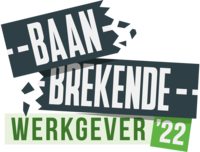
How to conduct a UX review in 5 easy steps.
A concrete action plan in just a few weeks
Having a user-experience and customer-experience mindset and initiatives has now proven its worth. Apart from a few hard nonbelievers, everyone is convinced.
There are several techniques to guarantee a good user experience, which work at different levels of the organization, product, design-thinking process, and at different times in the product life-cycle. As a digital product powerhouse, Páu offers these techniques as turnkey tailor-made end-to-end solutions, but also as separate services. Páu is a full-stack partner that can deliver the right approach that fits within your organizational constraints.
The 5 stages of UX Review
Stage 1: Intake
During the intake—or exploration—stage, we will sit around a (virtual) table with you and your team. This is to get to know you and your business, as well as the context of the product, better. This is also the time to map all inputs. What sources of information do you have access to? How about user feedback? Incident reports? Analytics data? Then we will evaluate them all based on usability and quality. During this stage, we may redefine the KPIs to have the correct data in the analytics stage. Last but not least, we analyze the product itself. A short demo, or—for more complex products—a training session, helps us hit the ground running. We will also sit with your development team to understand why certain decisions were made.
Stage 2: Usability review
The UX expert will work autonomously on this. The application or website is explored in-depth from front to back, end-to-end and crisscross, with evaluations on specific points: the 10 heuristic principles.
10 usability heuristics
- Ensure visibility of system status
- The system and the real world must match
- User control and freedom
- Be consistent and use industry standards
- Prevent the user from making errors
- Make sure the user doesn’t have to remember things
- Flexibility and efficiency of use
- Keep it minimalist and aesthetic
- Make error messages less daunting: help users recognize, diagnose and recover from errors
- Offer a helping hand with help and contact functionalities and help documentation
For every aspect of the application, the expert evaluates whether the principles are gone against or not taken into account, and what you can do about it.
Stage 3: Technical review
Where the usability stage is in the hands of an expert and his/her insights/experience, for the technical stage (as well as in the analytical stage), we use tools. Now we look at the performance of the digital solution. The specific content of this stage does depend on the type of digital product. There are bound to overlap, but the technical expectations of an e-commerce platform—with all its interaction models—differ from those of a public body’s website, which primarily exists to share information. At Páu we have a lot of experience with Screaming Frog, but there are other tools for this kind of analysis.
Stage 4: Technical review
If available, as the final stage of our review initiatives, we put analytics in the mix. More specifically, user analytics. Getting an insight into how end-users use your digital solution remains the core of UX. After all, this is what the ‘U’ in UX stands for. But who are the users? Who uses the platform? Who doesn’t? Can the users be subdivided into groups or types of people? What are the characteristics of those user groups? Are there clear differences in their behavior? What are these differences? How do users enter your website? How long do they spend on one page or part of a page? Where do they leave the app from? We look for an answer to all of these questions using analytics.
Stage 5: Results
Phew! The last 4 weeks have been intense. We have gathered insights through an evaluation using tested methodology, we have checked these insights with user feedback and we have also tested the performance of the digital application. Now, we bring everything together in the reporting stage. Depending on the commercial agreements we have made with you, we design a concept that illustrates all findings then, along with you and your team, we set up a plan of action to implement these improvements.
As a finisher, just like at the beginning of the intake stage, we will sit around a (virtual) table with you and your team. We do this to remove or clear up any ambiguities or questions. This also counts as the official handover: the project debrief. Now you are set to improve your digital application’s user experience.


